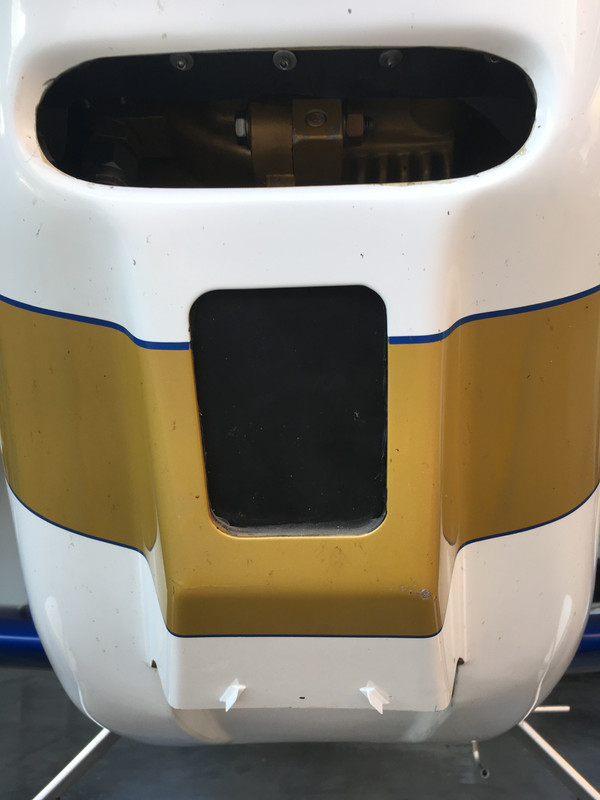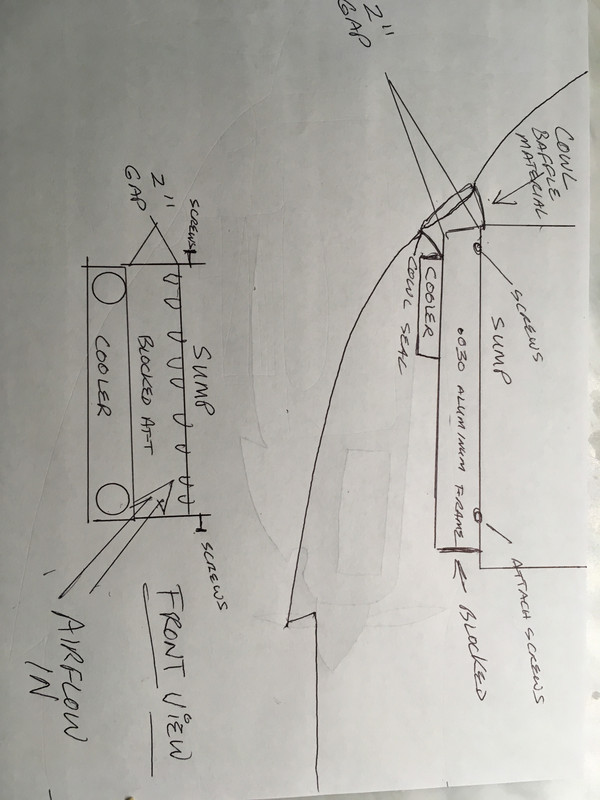eschrom
Well-Known Member
Hi Everyone,
I'm looking for advice from anyone running full flow with the cooler under the engine and getting good results. Can you describe your setup?
Mine is less than marginal. The idea is very simple: the cooler is in a shroud that ducts air from the smile, through the cooler and then overboard. There is no air flow over the rear part of the bottom of the case and I suspect that may be the problem but before I cut more holes in the shroud I'm curious about others' experience.
On Saturday the air temperature on the ground was mid 80s and in flight I had to hold the engine to 2500 rpm in order to keep the oil temperature from going above 215. Then I drilled some holes in my shroud to shoot air at the case and yesterday I could run the engine at 2700 but on the other hand the ambient was 10 degrees cooler than Saturday, soooo.... maybe yes, maybe no. The next step is to make bigger holes in the shroud unless someone can convince me to try something else.
Thanks in advance for any help.
Ed
2LS
GP 2276
I'm looking for advice from anyone running full flow with the cooler under the engine and getting good results. Can you describe your setup?
Mine is less than marginal. The idea is very simple: the cooler is in a shroud that ducts air from the smile, through the cooler and then overboard. There is no air flow over the rear part of the bottom of the case and I suspect that may be the problem but before I cut more holes in the shroud I'm curious about others' experience.
On Saturday the air temperature on the ground was mid 80s and in flight I had to hold the engine to 2500 rpm in order to keep the oil temperature from going above 215. Then I drilled some holes in my shroud to shoot air at the case and yesterday I could run the engine at 2700 but on the other hand the ambient was 10 degrees cooler than Saturday, soooo.... maybe yes, maybe no. The next step is to make bigger holes in the shroud unless someone can convince me to try something else.
Thanks in advance for any help.
Ed
2LS
GP 2276








